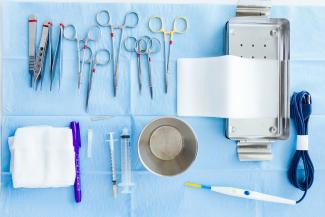In 2015, the World Health Organization (WHO) reported 8.8 million deaths from cancer. Each year, there are over 14 million new cases, and it is estimated that the number will increase by 70% in the next twenty years. These statistics reports do not account for cases in underdeveloped countries where neither proper diagnosis nor proper treatment is possible. That is why any new technology to help fight this formidable adversary brings hope to cancer patients and their families.
"The pen" identifies cancer tissue
One such technology is a device called MasSpec Pen and it was designed at the University of Texas, Austin. Before we talk about how it works, let's think what poses the biggest problem during any surgical procedure performed to remove cancerous tissue. Dr Livia Eberlin (leader of the research group that engineered MasSpec Pen) says that patients themselves know quite well where the problem is because, after the surgery, surgeons will often hear them say 'I hope you got it all out'. And 'all' is the crux of the matter.
It turns out that during the surgical procedure, it is not easy to tell normal tissue from cancerous tissue. Of course, there are diagnostic techniques that help in the most difficult cases but unfortunately they come at a cost, and the cost is time. Currently, the most common method to determine the boundary between normal and cancerous tissue is frozen section analysis. Put simply, tissue samples are removed and frozen in the presence of cryoprotectants to protect the cells against the effects of ice crystals formation. In surgery, time is a precious commodity due to the increasing risk of infection and undesirable effects of prolonged anesthesia. To make matters worse, it is estimated that 10 to 20% of all frozen sections performed yield inconclusive results.
How does it work?
This is when the Texas innovation comes to succor. MacSpec is a pen-size device connected to a mass spectrometer with polymer tubing. Its operation is quite simple. Each cell of a live organism, normal or cancerous, produces and excretes metabolites (chemical compounds of all kinds). These metabolites are cell specific and allow identification of normal and malignant cells. What is more, as the authors of the innovation suggest, they allow identification of different types of cancers. The surgeon touches the tissue with the pen-probe that dispenses a tiny droplet of water that comes into touch with the examined tissue. The metabolites are transferred to the droplet and then the droplet is sucked in by the pen-probe and transported to the mass spectrometer. The spectrometer analyzes the metabolites' composition, which is like a fingerprint of each particular cell. The biggest advantage? Time. The entire process takes 10 seconds. Further, the system is highly accurate. The first analyses were performed on 253 samples of human tissue with 96.3% positive cancer identification rate. And let me remind you this is just the beginning of studies and tests of the device.
All interested can find out more by reading the article 'Nondestructive tissue analysis for ex vivo and in vivo cancer diagnosis using a handheld mass spectrometry system', Livia S. Eberlin, et al,. DOI: 10.1126/scitranslmed.aan3968 or visiting the University of Texas website.





